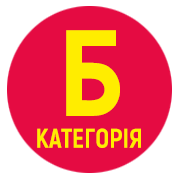THE USE OF TARGETED INFLUENCE TOOLS AS A PEDAGOGICAL CONDITION FOR DEVELOPING THE ABILITY TO MAINTAIN BALANCE
DOI:
https://doi.org/10.32782/olimpspu/2024.1.5Keywords:
acrobatics, coordination abilities, balance maintenance, set of exercises, balancing trainers.Abstract
For modern acrobatics, the characteristic features include the intensity of competitive and training activities, continual elevation of coordination complexity in exercises, and the necessity to develop stable and reliable technical skills. Therefore, it is important to investigate the use of various targeted influence tools for the development of the ability to maintain balance in girls aged 7−9 who are engaged in acrobatics. We have developed, implemented, and experimentally tested a set of exercises using modern equipment to enhance the ability to maintain balance in girls aged 7−9 practicing acrobatics. Based on the obtained results, the following conclusions can be drawn: the level of development of the ability to maintain balance increased in the researched acrobats in both the control and experimental groups as a result of the conducted experiment. In the control group of girls, no statistically significant changes were observed, while in the experimental group, a statistically significant improvement was noted in all control tests. In control tests that involved holding the leg forward or sideways, the results of both groups of girls were higher when the element was performed on the supporting left leg. Conversely, in control tests involving holding the leg backward, the results of acrobats were better when performing this group of elements on the supporting right leg. This statistic remained consistent even after the experiment. The developed and implemented set of exercises using modern equipment to enhance the ability to maintain balance in girls aged 7−9 engaged in acrobatics allowed for an average improvement of 44% in the ability to maintain static and dynamic balance. Moreover, the results of the girls improved not only in body elements but also in rotational movements.
References
Багінська О.В. Здатність до утримання рівноваги дітей молодшого шкільного віку як показник розвитку їх рухової функції в процес навчання фізичної культури. Науковий часопис Національного педагогічного університету імені М.П. Драгоманова. 2014. № 15. № 3К (44)14. С. 53–56.
Боярчук О.Д., Гаврелюк С.В. Вікова анатомія та фізіологія : практикум / Держ. закл. «Луган. нац. ун-т імені Тараса Шевченка». Старобільськ : Вид-во ДЗ імені Тараса Шевченка, 2017. 252 с.
Булатова М.М., Линець М.М., Платонов В.М. Розвиток фізичних якостей. Теорія і методика фізичного виховання : підручник для студ. вищ. навч. закл. фіз. виховання і спорту / за ред. Т.Ю. Круцевич. Київ : Олімпійська література, 2008. Т. 1.
Круцевич Т.Ю., Воробйов М.І., Безверхня Г.В. Контроль у фізичному вихованні дітей, підлітків та молоді : навчальний посібник. Київ : Олімп. л-ра, 2011. 224 с.
Маландій Є.О. Поняття та класифікація координаційних здібностей. Інноваційні і цифрові технології у процесі підготовки спортсменів в умовах формального і неформального навчання : матеріали ІІІ Міжнародної науково-практичної конференції / відповід. ред. Д.В. Бермудес, наук. ред. Д.В. Бермудес. Суми : ФОП Цьома С.П., 2023. С. 99–100.
Сергієнко Л.П. Тестування рухових здібностей школярів. Київ : Олімпійська література, 2001. 440 с.
Шиян Б.М. Теорія і методика фізичного виховання школярів. Тернопіль : Навчальна книга-Богдан, 2006. Частина 2. 248 с.







